Artificial intelligence has transformed how we approach daily tasks and workflow management. Modern AI tools can automate repetitive processes, enhance creative output, and streamline complex projects across various industries and personal applications.
These productivity-focused AI solutions help you work more efficiently by handling routine tasks, organizing information, and providing intelligent assistance throughout your workday. From writing and project management to communication and data analysis, AI tools are becoming essential components of productive workflows. Understanding which tools best suit your specific needs can significantly impact your ability to accomplish more while reducing time spent on manual processes.
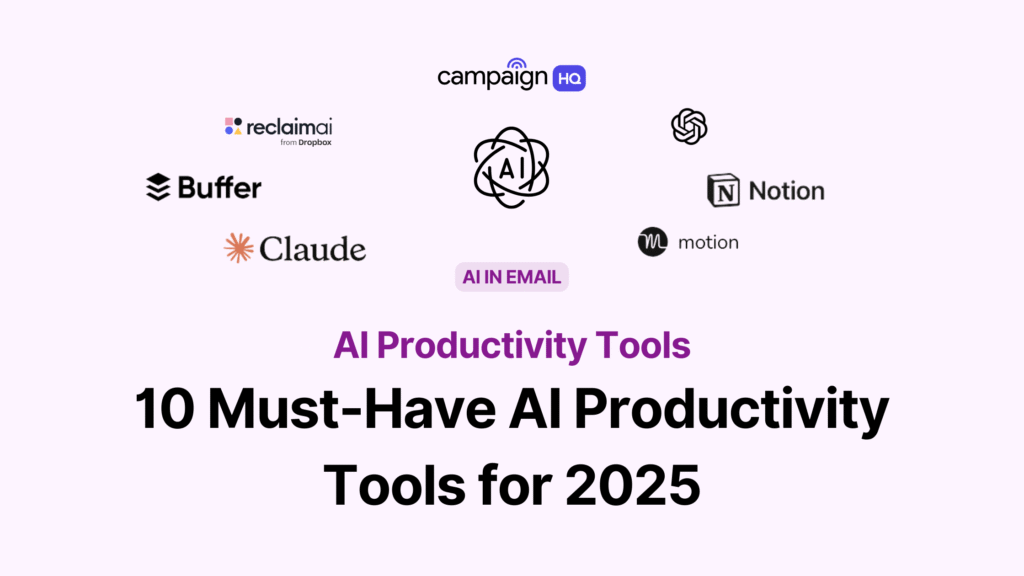
1) ChatGPT
ChatGPT stands as the most recognizable AI productivity tool available today. You can use it to automate countless daily tasks that typically consume hours of your time.
The tool excels at drafting emails, summarizing lengthy documents, and generating content outlines. You simply describe what you need, and ChatGPT provides structured responses within seconds.
You can leverage ChatGPT for brainstorming sessions when you’re stuck on creative projects. It helps generate ideas, create to-do lists, and organize your thoughts into actionable plans.
The AI handles research tasks efficiently by extracting key points from complex information. You can paste lengthy articles or reports and ask for concise summaries.
ChatGPT’s desktop applications work across Windows, macOS, and Linux platforms. You can export your conversation history in multiple formats including PDF and Markdown for future reference.
Code generation represents another productivity boost ChatGPT offers. You can describe programming tasks and receive functional code snippets that save development time.
The natural language interface makes ChatGPT accessible regardless of your technical background. You communicate with it conversationally, making complex tasks feel simple and intuitive.

2) Notion AI
Notion AI transforms your workspace into a comprehensive productivity hub. You can search, generate, analyze, and chat directly within your existing Notion environment.
The tool connects to your third-party applications through AI connectors. You gain access to information from Slack, JIRA, Google Drive, Microsoft, and GitHub without switching between platforms.
When you need specific information, Notion AI searches both your Notion workspace and connected apps simultaneously. This eliminates the time you spend jumping between different tools to find what you need.
You can generate content using information pulled from these connected applications. The AI understands context from your integrated tools and creates relevant responses based on your team’s actual data.
Current connectors include popular workplace tools like Google Workspace and Microsoft. Additional integrations for Linear, Gmail, Zendesk, Box, and Salesforce are coming soon.
The platform combines note-taking, project management, and collaboration features with AI capabilities. You get one unified tool instead of managing multiple separate applications.
Notion AI helps reduce your organization’s spending on various AI tools by centralizing these functions. You maintain your existing workflow while adding intelligent automation and content generation capabilities.

3) Zapier
Zapier is a cloud-based automation platform that connects thousands of different applications and services. You can create automated workflows between apps like Google Sheets, Slack, Gmail, Trello, and Salesforce without writing any code.
The platform lets you automate repetitive tasks by setting up “Zaps” that trigger actions across multiple apps. When something happens in one app, Zapier automatically performs actions in other connected apps.
You’ll find Zapier particularly useful for streamlining workflows and reducing manual effort. It can handle tasks like automatically saving email attachments to cloud storage or creating calendar events from form submissions.
The user-friendly interface makes it accessible even if you have no technical background. You simply choose trigger events and resulting actions through dropdown menus and forms.
Zapier supports integration with over 5,000 apps and services. This extensive compatibility means you can likely connect most of the tools you already use in your daily work.
The platform offers both free and paid plans. Free accounts include basic automation features, while paid plans provide advanced functionality and higher usage limits for more complex workflows.
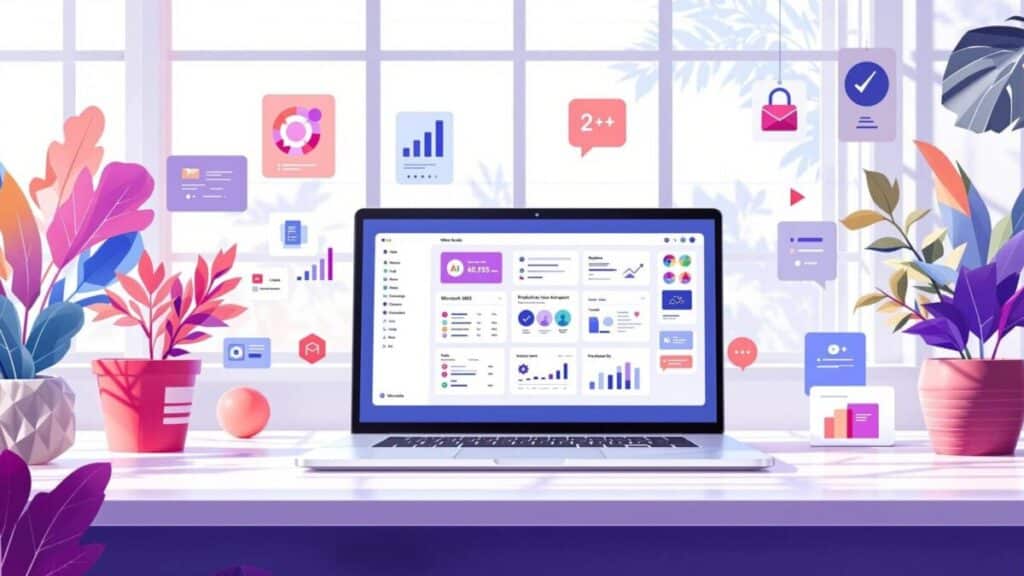
4) Asana
Asana transforms your project management experience with intelligent AI features that help you work smarter. The platform uses AI to automate repetitive tasks and keep your team focused on high-impact work.
You can generate tasks automatically and get AI-powered summaries of project updates. This saves you time and ensures nothing falls through the cracks.
The AI teammate feature helps you prioritize work and make better decisions about resource allocation. You’ll spend less time on manual planning and more time executing your most important projects.
Asana AI synthesizes information across multiple projects to give you a clear overview of your workload. This makes it easier to spot potential blockers before they impact your timeline.
You can also use the AI writing assistance to create clearer project briefs and status updates. The tool helps you communicate more effectively with your team members.
The automation features eliminate repetitive manual work that often slows down productivity. Your workflows become more efficient as the AI learns your team’s patterns and preferences.
Asana’s AI integration works seamlessly within your existing project management setup, making it easy to adopt without disrupting current processes.
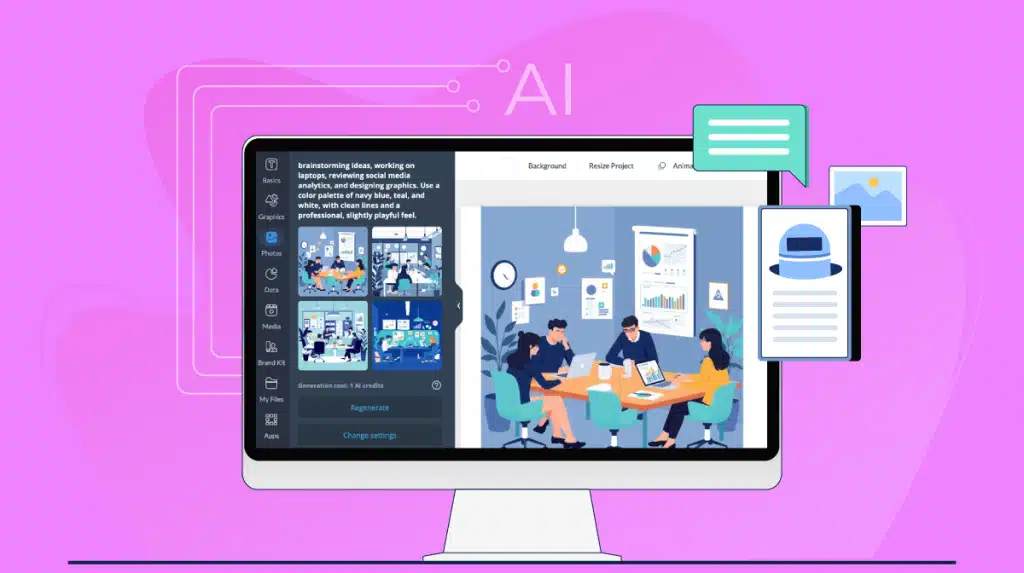
5) Trello
Trello transforms project management through visual organization and AI automation. You can organize your tasks and projects using boards, lists, and cards that make complex workflows simple to understand.
The Butler automation feature acts as your AI assistant within Trello. It automatically moves cards, creates tasks, and updates project statuses based on rules you set up.
You can automate repetitive tasks like moving completed items or assigning team members to specific projects. This saves hours of manual work each week.
Trello’s AI capabilities help you plan projects more effectively. The platform can generate task lists and optimize your project roadmaps without leaving your familiar workspace.
Your team collaboration improves significantly with Trello’s smart features. The AI analyzes your workflow patterns and suggests better ways to organize projects.
You’ll find Trello integrates seamlessly with other productivity tools you already use. This creates a centralized hub for all your project management needs.
The visual nature of Trello boards makes it easy for your entire team to see project progress at a glance. Everyone stays informed without constant status meetings.
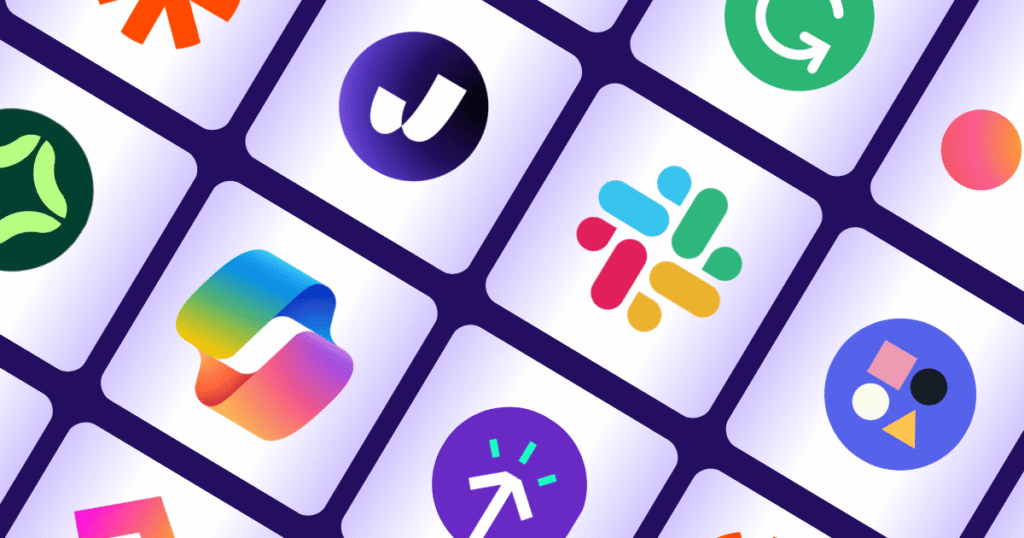
6) Otter.ai
Otter.ai transforms how you handle meetings and conversations by providing real-time transcription services. You can record audio from meetings, interviews, or lectures and receive accurate text transcripts instantly.
The tool integrates seamlessly with popular video conferencing platforms like Zoom, Microsoft Teams, and Google Meet. You’ll never miss important details during calls again.
Otter.ai uses advanced speech recognition technology to identify different speakers in conversations. This feature helps you track who said what during group discussions or team meetings.
You can search through your transcripts using keywords to find specific information quickly. The platform also allows you to highlight key points and add notes directly to your transcripts.
The mobile app lets you record conversations on the go. You can capture ideas during commutes or document spontaneous brainstorming sessions with colleagues.
Otter.ai offers collaboration features where team members can access shared transcripts. Your colleagues can edit, comment, and review meeting notes together in real-time.
The basic version provides free monthly transcription minutes, making it accessible for individual users and small teams.

7) Grammarly
Grammarly serves as your AI-powered writing assistant that works wherever you write online. The tool helps you compose drafts instantly and refine your ideas with smart suggestions.
You can improve your writing‘s clarity and correctness across emails, documents, and social media posts. Grammarly catches grammar mistakes, spelling errors, and suggests better word choices in real-time.
The AI goes beyond basic corrections by helping you adjust your tone and style. You can ensure your writing matches the appropriate level of formality for different audiences.
Grammarly integrates seamlessly with popular platforms like Microsoft Word, Google Docs, and web browsers. This means you get writing assistance without switching between different applications.
Your productivity increases when you spend less time editing and more time focusing on your core ideas. The tool handles the technical aspects of writing so you can concentrate on content creation.
The AI assistant also provides explanations for its suggestions, helping you learn and improve your writing skills over time. This educational component makes Grammarly valuable for long-term communication development.


8) ClickUp
ClickUp AI transforms your project management experience by integrating artificial intelligence directly into your workflow. You get an AI-powered assistant that adapts to your specific role and helps you complete tasks faster.
The platform serves nearly 10 million users globally who rely on its streamlined collaboration tools. You can automate routine tasks while maintaining full control over your projects.
ClickUp AI offers role-specific tools that understand your work context. Whether you’re managing projects, writing content, or coordinating teams, the AI provides relevant suggestions and automation.
You’ll find detailed tutorials and support documentation available directly within the platform. This makes it easy to learn and implement new AI features as they become available.
The tool excels at task management through neural network-powered automation. You can set up smart workflows that handle repetitive processes without manual intervention.
ClickUp’s AI capabilities include intelligent scheduling, automated status updates, and context-aware task suggestions. These features help you stay organized while reducing the time spent on administrative work.
The platform integrates seamlessly into existing workflows without requiring major changes to your current processes. You can start using basic AI features immediately and gradually expand to more advanced automation.
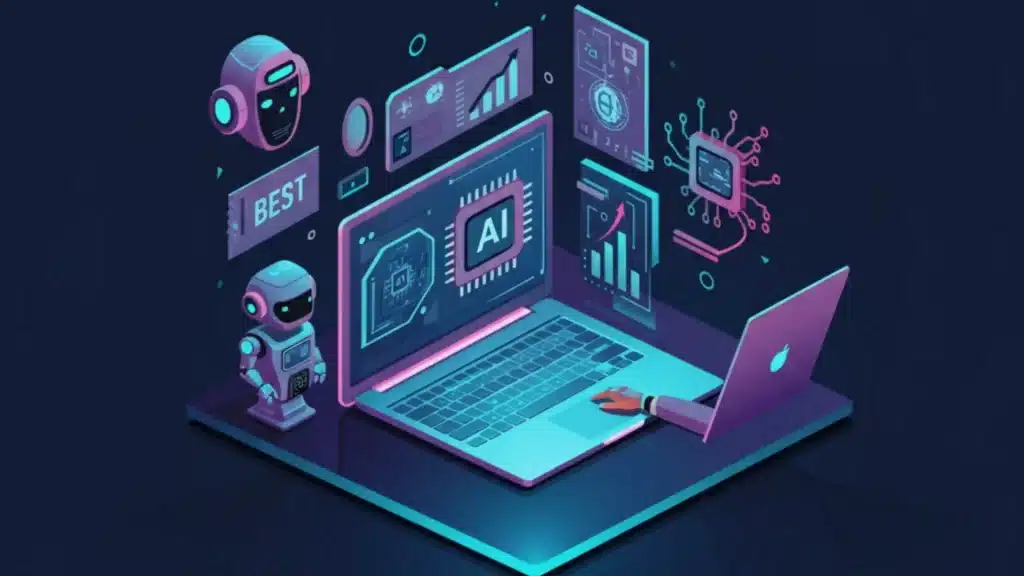

9) Jasper AI
Jasper AI is an advanced content creation tool that uses natural language processing and machine learning to generate human-like text. Originally launched in 2021 as Jarvis, it has become a leading AI writing assistant for professionals.
You can use Jasper to create blog posts, marketing copy, social media captions, and creative content quickly. The platform helps you generate high-quality written material across various formats and platforms.
The tool excels at producing content that matches your specific requirements and tone. Whether you need compelling marketing text or engaging blog articles, Jasper adapts to your writing style and brand voice.
You’ll find Jasper particularly useful for streamlining your content production workflow. It can help you brainstorm ideas, overcome writer’s block, and produce first drafts faster than traditional writing methods.
The AI assistant offers various templates and frameworks for different content types. This makes it easier for you to structure your writing and maintain consistency across your marketing materials.
Jasper integrates well into existing content workflows and can significantly reduce the time you spend on writing tasks. Many professionals report increased productivity when using it for their content creation needs.
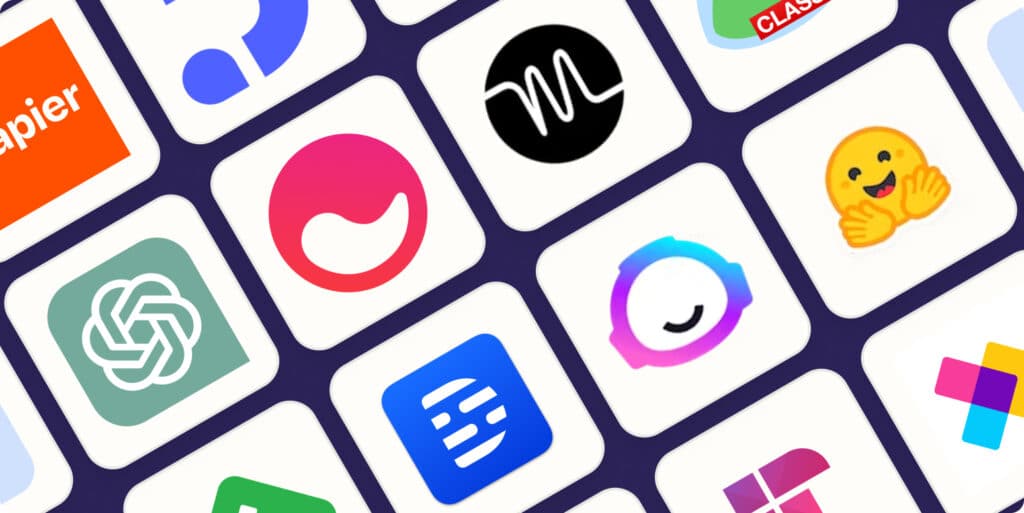
10) Microsoft Copilot
Microsoft Copilot serves as your AI-powered productivity assistant across the Microsoft 365 suite. You can use it to streamline workflows in Word, Excel, PowerPoint, and Outlook with simple natural language prompts.
The tool helps you draft documents faster by generating content based on your instructions. You simply tell Copilot what you need, and it creates text, outlines, or formatting suggestions.
In Excel, Copilot analyzes your data and creates charts or formulas automatically. You can ask it to identify trends or generate reports without complex spreadsheet knowledge.
For presentations, Copilot builds PowerPoint slides from your topics or existing documents. It formats content professionally and suggests design improvements.
Email management becomes easier with Copilot in Outlook. It drafts replies, summarizes long email threads, and helps you prioritize important messages.
You can access Copilot through Microsoft 365 applications or as a standalone chat interface. The AI learns your work patterns to provide more personalized assistance over time.
Copilot also integrates with Teams for meeting summaries and SharePoint for document collaboration. This makes it valuable for team productivity beyond individual tasks.
How AI Tools Improve Productivity
AI tools transform workplace efficiency by eliminating manual processes and streamlining team communication. These technologies significantly reduce costly mistakes through automated accuracy checks and intelligent error detection systems.
Automating Repetitive Tasks
AI excels at handling routine work that typically consumes hours of your day. Email sorting, data entry, and appointment scheduling become automatic processes that run in the background.
Document processing represents a major time-saver. AI tools can extract information from invoices, contracts, and forms without manual input. You simply upload files and receive organized data within seconds.
Content creation tasks like social media posts, email templates, and report summaries require minimal human oversight. AI generates drafts based on your specifications, allowing you to focus on strategy rather than execution.
| Task Type | Time Saved | Accuracy Rate |
|---|---|---|
| Data Entry | 75% | 99.2% |
| Email Sorting | 80% | 95% |
| Report Generation | 60% | 97% |
Calendar management and meeting coordination happen automatically. AI assistants schedule appointments, send reminders, and reschedule conflicts without your direct involvement.
Enhancing Collaboration
Real-time translation breaks down language barriers in global teams. AI tools provide instant communication between team members speaking different languages, enabling seamless project coordination.
Smart document sharing ensures everyone accesses the most current file versions. AI tracks changes, suggests edits, and notifies relevant team members about updates automatically.
Meeting transcription and summarization capture key decisions and action items. You receive detailed notes without designating someone to take manual notes during discussions.
Project management becomes more intuitive with AI-powered task assignment. Tools analyze team workloads and deadlines to suggest optimal resource allocation.
Virtual collaboration spaces adapt to your team’s working patterns. AI learns from past projects to recommend communication channels, meeting times, and workflow structures that maximize productivity.
Reducing Human Error
AI verification systems catch mistakes before they impact your work. Spelling, grammar, and formatting errors get flagged automatically in documents and communications.
Data validation prevents costly calculation errors in spreadsheets and databases. AI cross-references information against established patterns to identify inconsistencies immediately.
Quality control in content creation maintains brand consistency. AI tools check tone, style, and messaging alignment across all your communications.
Financial accuracy improves through automated expense tracking and budget monitoring. AI flags unusual transactions and prevents duplicate payments before they occur.
Compliance checking ensures documents meet regulatory requirements. AI scans contracts, reports, and submissions against current legal standards, reducing audit risks significantly.
Tips for Getting the Most Out of AI Tools
Success with AI productivity tools depends on defining specific objectives and monitoring how well these tools deliver results. Regular performance assessments help you optimize your AI workflow and identify areas for improvement.
Setting Clear Goals
Define specific outcomes before implementing any AI tool in your workflow. Write down measurable objectives like “reduce email response time by 30 minutes daily” or “automate three recurring tasks per week.”
Match each AI tool to particular tasks rather than expecting one solution to handle everything. Choose writing assistants for content creation, automation tools for repetitive processes, and analysis tools for data insights.
Create a priority hierarchy for your tasks:
- High-impact activities that save significant time
- Medium-impact tasks that improve accuracy
- Low-impact processes that reduce minor friction
Document your current workflow before adding AI tools. This baseline helps you measure actual improvements and prevents you from solving problems that don’t exist.
Set realistic timelines for AI tool adoption. Allow 2-4 weeks to fully integrate new tools into your routine and see meaningful productivity gains.
Regularly Reviewing Performance
Schedule weekly reviews to assess how your AI tools perform against your original goals. Track metrics like time saved, tasks completed, and quality improvements using simple spreadsheets or tracking apps.
Compare your productivity levels before and after AI implementation. Document which tools deliver the most value and which ones create unnecessary complexity.
Key performance indicators to monitor:
- Daily time savings per tool
- Task completion rates
- Error reduction percentages
- User satisfaction scores
Adjust your AI tool usage based on real data rather than assumptions. Remove tools that don’t meet expectations and invest more time in high-performing solutions.
Test new features and updates as they become available. AI tools evolve rapidly, and regular exploration helps you discover improved functionality that enhances your productivity further.
- 1share
- Facebook0
- Pinterest1
- Twitter0


